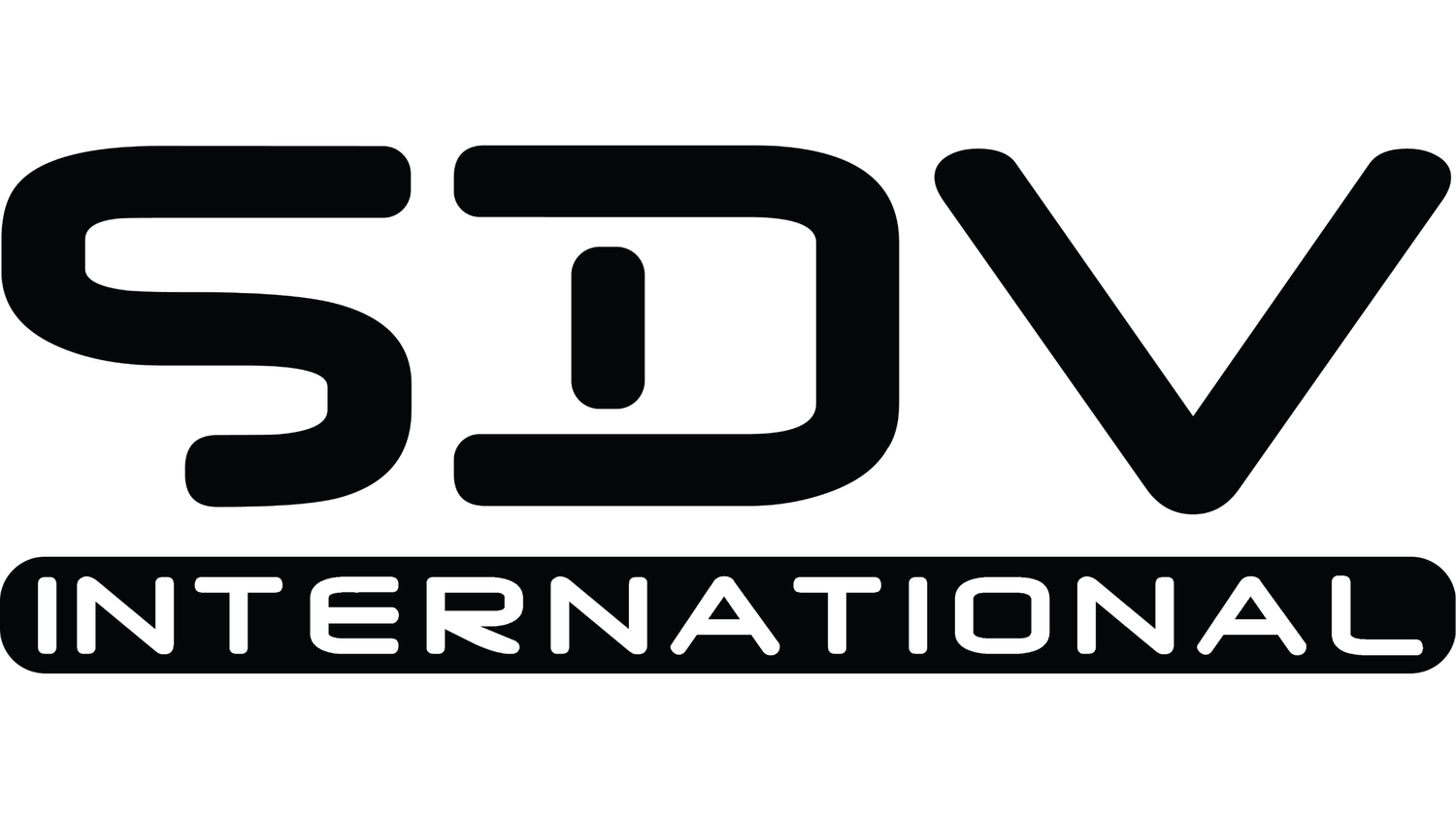By Jason Roys
There’s an old business saying – a joke really – that goes like this: “Price. Service. Quality. Choose any two.” The underlying truth for a lot of businesses is that when they prioritize price and service, quality suffers. And when they focus on quality, price and service suffer.
But all three can co-exist when companies and government agencies commit to implementing an effective quality management system (QMS). The need for quality control in a vast range of businesses has led to the development of an entire quality management industry, of which SDV International is at the forefront.
In this article, you'll learn about quality management systems and their critical importance to sustainable success in today’s competitive market. QMS is not easy to master, but it can be done with the right QMS design and support.
What is a quality management system?
Quality assurance and quality control are important for any business, but they're just two components of a quality management system. The overall goal is to ensure consistent results in every product every time for every customer.
That’s where quality management systems come in. A QMS is an enterprise-wide system of documents, policies, procedures and controls designed to create and deliver high-quality products or services to customers every time. It’s a major undertaking, but the goals are a template for success: Do a better job of meeting customer requirements, increase customer satisfaction, increase sales and – voila! – increase profit.
At the same time, a QMS ensures that a company meets both its customers’ expectations and its regulatory requirements. Built into every effective quality management system is a process that provides for continuous improvement in operations, products and services, which helps a company run more efficiently. Other benefits include:
Centralized quality control policies.
Standardized processes.
Reduced waste and lower costs.
Mistake prevention.
Increased collaboration across divisions (i.e. fewer silos!).
Standardized training of new employees.
That’s the 10,000-foot view. Let’s dig a little deeper into how SDV International applies QMS internally and for its clients.
How does SDV International use QMS?
SDV International’s QMS is in a constant state of continuous improvement. It announced in July 2021 that its quality management systems are compliant with ISO 9001:2015. In addition, it has its CMMI Level 3 Certification with Supplier Agreement Management (SAM), which is used in the acquisition of products and services from suppliers.
There are some differences between CMMI and ISO, but the two systems complement each other. CMMI is process-driven, both internal and industrial best practices. ISO provides more of a checklist for auditing purposes.
As an organization, one of the steps toward realizing maximum efficiency is to establish real-world tested processes and procedures for repeatable tasks. SDV’s teams are dedicated to developing and maintaining this living repository of advanced knowledge and lessons learned to both serve customers and streamline internal processes.
Everyone at SDV International understands the value and comfort that come with having such a toolbox. Those tools hold the processes to answer important questions. These include – How do we:
Set goals and KPIs?
Hit targets on deliverables?
Perform annual training?
Carry out governance and a continuation of operations plan?
Choose software?
Handle personnel issues?
The QMS allows SDV International’s teams to answer these questions collectively.
What differentiates SDV International from other QMS companies?
When you do an internet search for “quality management systems,” the results can more often be described as ”quality management software.” SDV International believes that a QMS is software-agnostic, and that a software solution is not the answer to a company’s need for a QMS. In fact, a well-designed QMS can run on Microsoft SharePoint with a minimum of training. It’s not glamorous, but it works.
Rather, your QMS encompasses all your processes and procedures, documentation and SOPs, very much tailored and customized to you as an organization or company. SDV International often consults with clients and provides guidance on the development, adoption or modification of their processes and procedures.
One of SDV International’s current clients hasn’t done a lot of documentation, so SDV has consulted with them, guided them and made recommendations. One of those recommendations resulted in the implementation of a Change Control Board with representation from major stakeholder groups. If there’s to be a major software change, for example, they know who must be at the table and who has the primary decision-making authority. They know the questions to ask and the results they’re looking for, which drives other changes and creates accountability.
Elements of a QMS
While a QMS must be tailored to specific organizations and industries, they start the same way; by defining quality. This is not a static but a dynamic concept, which is ultimately determined by customer expectations and customer satisfaction. That goal of customer satisfaction is achieved through the alignment of people, processes and technology, also known as total quality management (TQM). Quality management systems share other characteristics, such as:
Quality manual.
Procedures, instructions and records.
Data management.
Standardized internal processes.
Quality audits and analyses.
An iterative process for continuous quality improvement.
The inputs for a QMS are customer requirements expressed in procurement documentation and refined as the customer relationship evolves. The perspectives of interested parties are also considered, but customer focus is the main driver.
The primary output of a QMS is fully realized customer requirements and the consequent customer satisfaction based on the delivery of effective products and services.
An example of the iterative approach to continuous improvement is the PDCA model: Plan, Do, Check, Act. Monitoring and control techniques are established to detect and correct quality issues as soon as they arise. The PDCA cycle is also an opportunity for risk assessment and risk management.
The system should also ensure that required resources are available to sustain the QMS and achieve customer satisfaction. Everyone in an organization – from leadership to professional staff to production staff – must have a clear understanding of their roles in executing the business procedures that make up the QMS.
That’s a lot, right? Fortunately, there are some internationally recognized frameworks for quality management that can help guide the way.
4 philosophies behind quality management systems
The four most prominent frameworks of quality processes are ISO 9001, AS9100, Six Sigma and CMMI. They are not mutually exclusive, and companies choose them based on how they fit to the industry and the understanding of a given QMS by employees and customers. Brief descriptions of each follow, but our focus here will be on ISO 9001.
AS9100 is defined by and for the aerospace industry and is an important benchmark for government contractors in that industry. It incorporates provisions for civil and military aviation and the aerospace industry, and covers the needs of suppliers, regulatory bodies and customers.
The Six Sigma quality system originated in high-volume production and manufacturing. Its main goal is to identify and measure variance. It doesn’t guarantee quality but provides expectations of performance based on customer satisfaction.
CMMI, or Capability Maturity Model Integration, grew out of development guidelines for software by the Software Engineering Institute at Carnegie Mellon University. CMMI has five levels of maturity that represent stages and capability of a company with its processes.
ISO 9001
Published by the International Organization for Standardization, or ISO, this is the international standard for creating quality management systems. The standard was most recently updated in 2015, and it is referred to as ISO 9001:2015. A majority of the 167 member countries' representatives must agree upon any release or update of ISO 9001.
The ISO sets standards for specific industries, such as medical devices, food, IT and services. However, the requirements of ISO 9001 are generic and intended to be applicable to any organization, regardless of its type or size, or the products and services it provides.
An organization can be certified as meeting the ISO standard when it has the quality policies and management plans that meet quality system requirements. It must show it can consistently provide products and services that meet customer and applicable statutory and regulatory requirements.
And it must show that it enhances customer satisfaction through the effective application of the QMS, including processes for improvement of the system and the assurance of conformity to customer and applicable statutory and regulatory requirements.
The specific components of ISO 9001:2015 certification are:
Quality objectives. The objectives define future goals and the purpose of QMS. Also, it assists the organization to understand customer requirements.
Organizational structure and duties. The QMS must have an updated managerial structure, including responsibilities and key performance indicators for every team.
Data management. Managing the administrative data effectively is a key provision for the QMS system. Data management assists in identifying variances and risks and taking corrective action.
Processes. Processes are optimized to define standards, take corrective action, maintain continuous improvement and record modifications in process, improvements and results.
Consumer satisfaction and product quality. Customer satisfaction is the yardstick by which a quality process is measured.
Continuous improvement. A must-do practice for achieving consistent product quality.
Quality instruments. For producers, their tools and instruments must be maintained at a high quality.
Document control. The QMS should comprise documents that record all important aspects of the organization and its processes and provide for regular reviews and updates.
Why is a QMS essential in the public and private sectors?
An effective quality management system does more than improve product quality, enhance customer satisfaction, manage risk and reduce cost. Here are a few reasons for making QMS an essential part of your business processes. In fact, you might think of a QMS as a “business management system.”
Reputation management. In today’s hyper-accelerated information environment, a slipup can quickly become a PR nightmare (think product recalls because of manufacturing defects). More importantly, consistent quality burnishes a company’s reputation.
Legal protection. Documentation of policies, procedures, records and audit trails reduces the risk of litigation.
People systems. The QMS accelerates the on-boarding process, automating the process of training record management, analyzing resource needs and identifying training gaps.
Sales and marketing effectiveness. A QMS gives teams the details they need to back up marketing claims with data and examples demonstrating competitive advantage.
Procurement. The QMS lets a business systematically share its quality objectives with suppliers. The performance of suppliers and contractors can be tracked and audited.
Focus on quality
SDV International cultivates relationships with clients so they can truly understand what each client needs, not necessarily what they want. It’s a multiyear process, so it’s important to establish a relationship with a partner who is invested in your success. Whatever technology or business obstacles your company or organization is facing, SDV International can help you bridge them. To learn more, contact SDV International.

